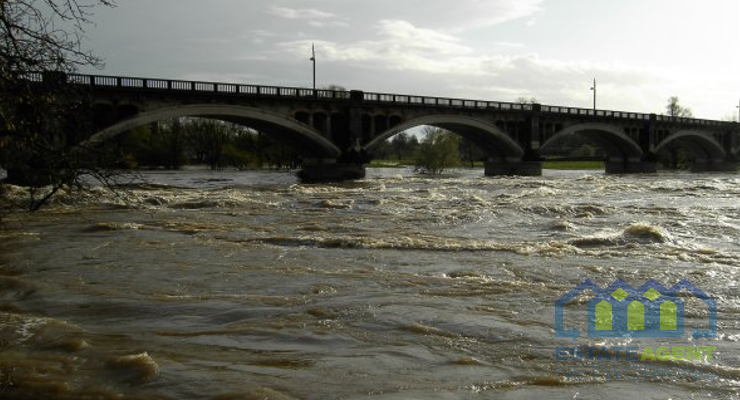Dampness in Your Property and How to Treat it
A worrying site for buyers and certainly a concern too for homeowners / tenants will be the appearance of dampness. Sometimes we can confuse dampness with more pressing concerns such as leaks (roofing / water pipes) or accidental spillage such as tea spilt on the floor above and leaked through to ceiling below. Dampness is somewhat different and is an issue of excess moisture.
Dampness can come and go, especially between seasons and will react on the likes of house temperatures and outside weather such as long rain spells – Most likely to be worse in Autumn and Winter over Spring and Summer.
Places where dampness can be found include the bathroom, kitchen, on ceilings / walls / floors, windows, cellars / basements.
Bathroom are where a lot of moisture can be held via the likes of steam from showers and baths. In kitchens then it will be mostly from the likes cooking and washing up. When it comes to walls then you need to think about what is immediately on the other side as it may be an obvious source to the dampness such as a broken down pipe. Ceilings is a common area where dampness is spot as warm temperatures will cause the dampness in the air to rise and settle – Look out for darkened spots. Windows is another common area where dampness is spotted and accumulates – How many times have we seen condensation on windows and damp window sills! The basement and cellar areas of property will also be a place where dampness is happy to reside in amongst the dark, musty and already damp underground space – these areas can sometimes lack any ventilation.
What causes dampness?
There are many ways in which dampness takes presence in your property, the source being either from the outside or generated within.
Ventilation – The lack of ventilation will be a source of many problems that see the presence of dampness, the better your property is ventilated then the more excess moisture will be released out of it. It is important to consider that many homes, especially those newly built, are designed to keep water out so this in reverse will likely help to keep moisture in unless you get rid of it yourself. Even if you have a spare room and hardly ever use it, it pays to ventilate it every so often so it does not remain cold and a potential location for dampness to concentrate and thrive.
Outside causes – The problem of penetrating dampness can be via countless routes such as via cracked brickwork, loose rendering, missing mortar joints, dated flashing, eroded seals and more. Once again, if you note dampness inside, especially on walls, then you need to get your detective hat on and seek the source which if the wall is an exterior one then the moisture is likely to be coming from there originally. Chimney breasts are known to cause dampness so always check the roof area / chimney to see if rain water is penetrating within.
Rising damp – Missing damp proof coursing can see dampness creeping up from the ground to your walls / floors.
How to treat dampness in your home:
Treating dampness is all about stopping the source of it, prevention is key. From moisture in the air to dampness from missing roof tiles, you need to make sure that you have the problem resolved before you go on to finding the solution to what damage has been caused. Remember that dampness in property is not only aimed at those which are lived in, if you own a property that remains empty for long periods then it pays you to visit regularly to air it and check for any dampness visually or damp smells etc.
Any dampness in walls will dry out once the source has been stopped – Ideally look to take on repair work once the area is dried. Redecorating to simply sponging with clean water will rid of the likes of mould spots / spores. Plaster needs to be checked to see if the dampness has called weak spots / unsightly expansions (especially plasterboard).
If you home has little ventilation then think about extractor fans or even dehumidifiers. Try and keep you property warm and at a constant temperature to avoid condensation. Adopt habits such as keeping the bathroom window open during hot showers / baths and likewise if you have many saucepans on the go boiling food in the kitchen.









